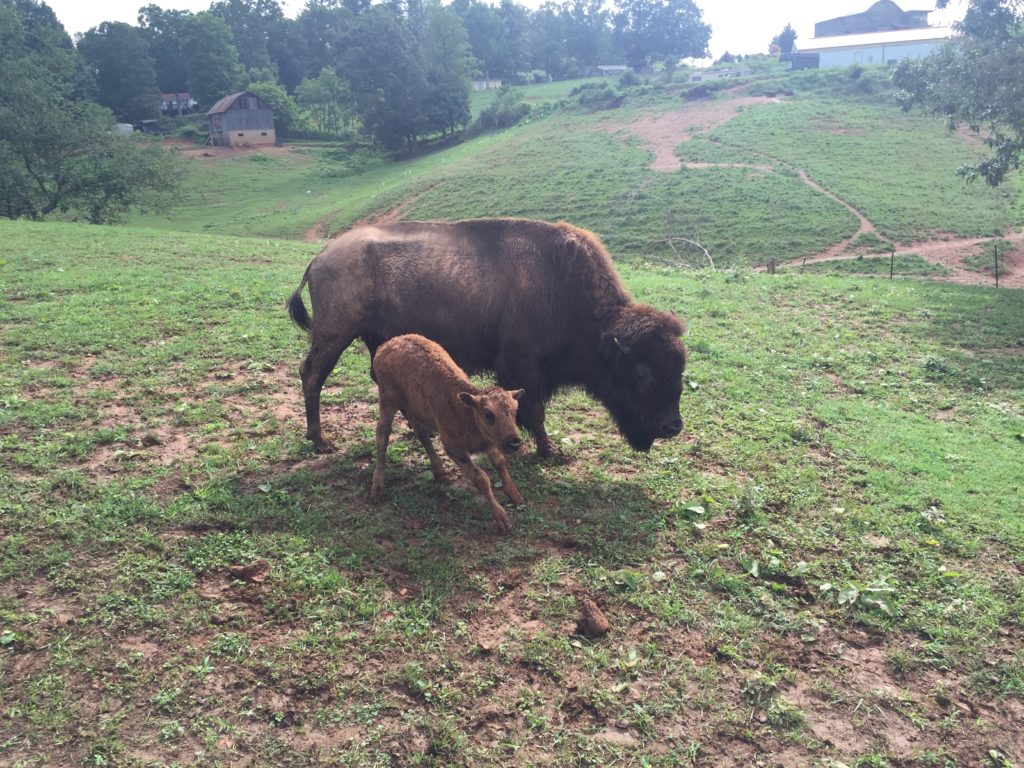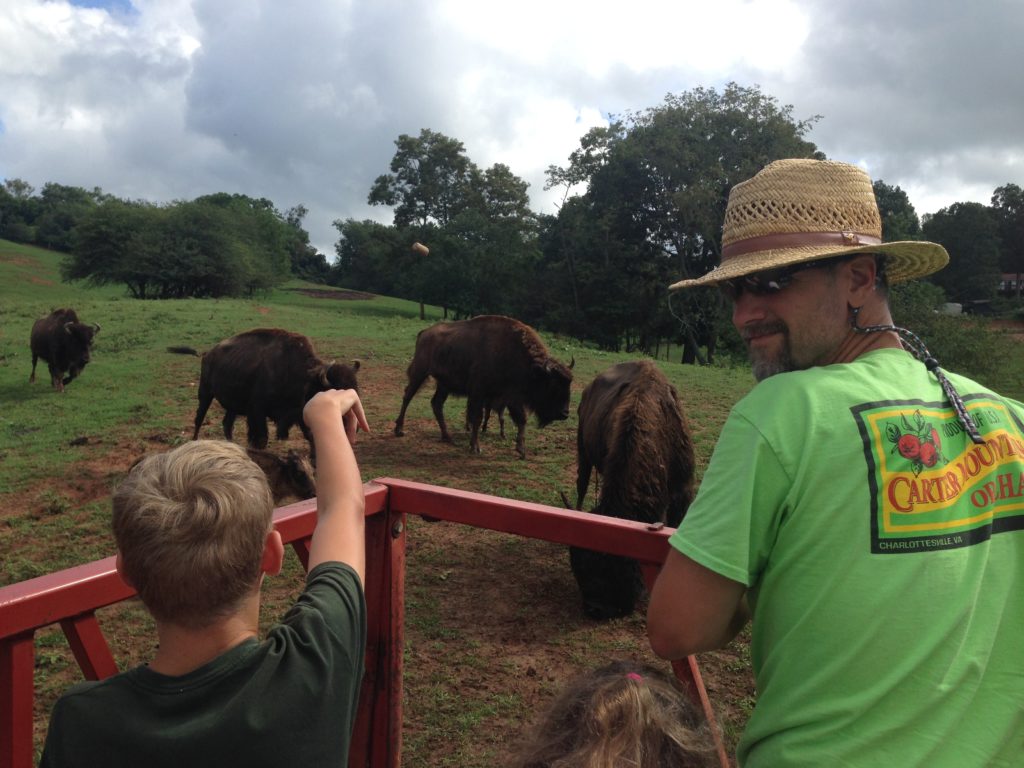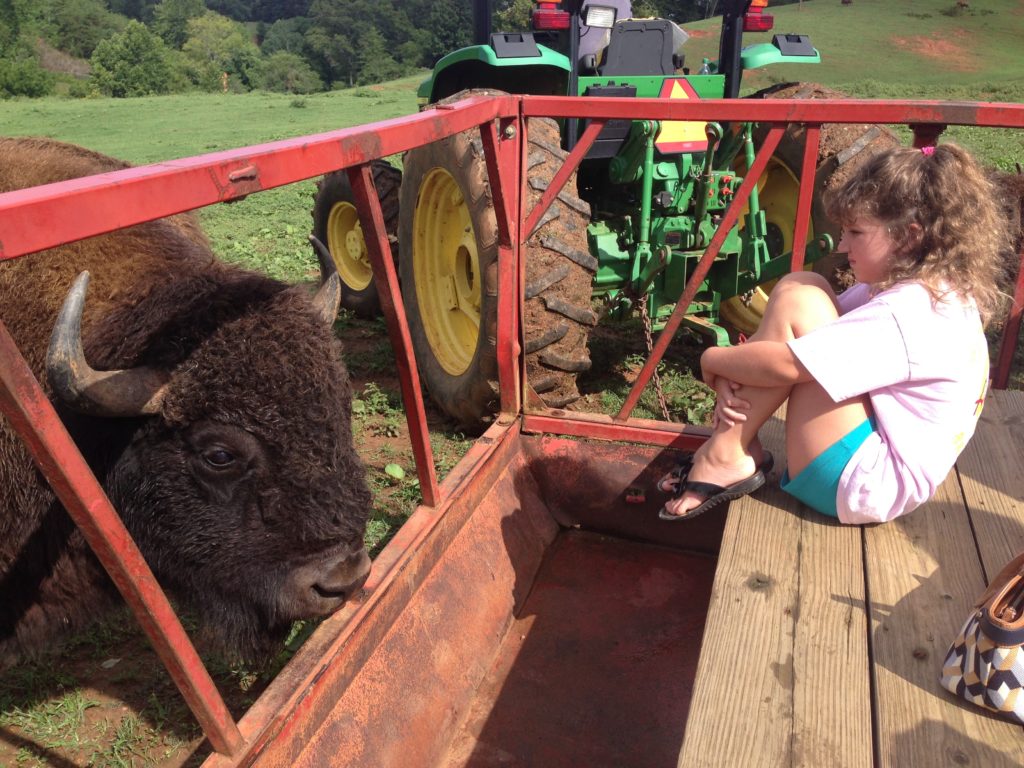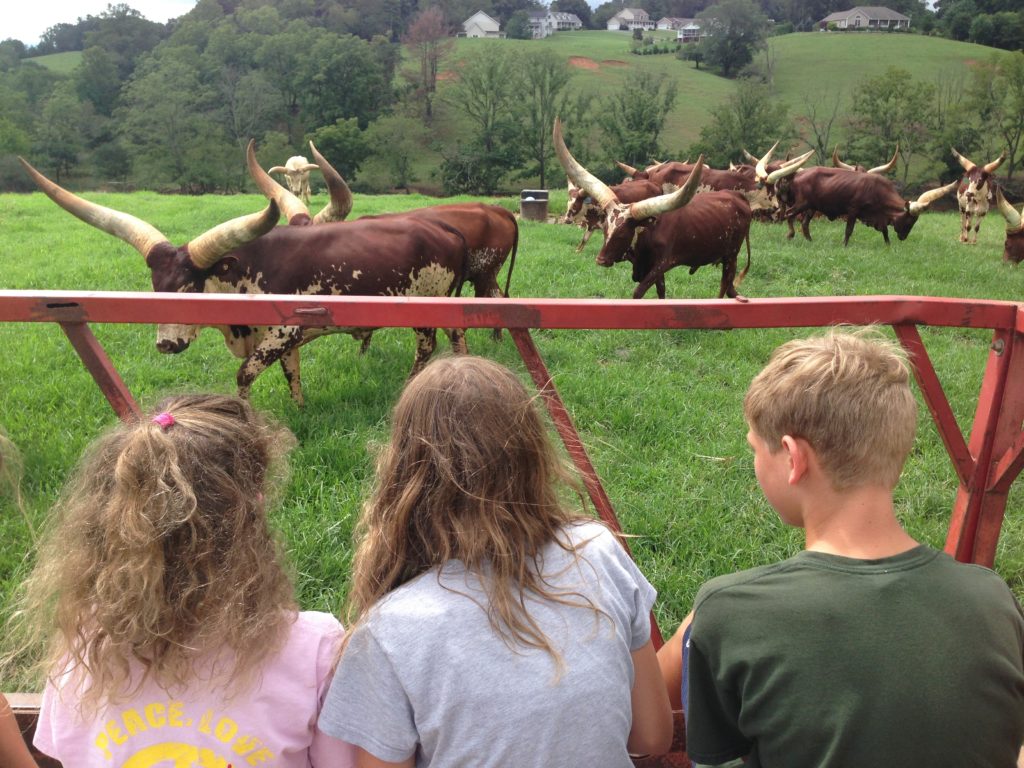In the last post, we’d just made it over to the bison in the pasture. The bison, like our cows, were used to this gig and came right over to get a handout from the tourists allowing us to see the bison up close.


However Spork and I weren’t just tourists on this trip. As professional tour guides, we were paying close attention to how the tour was handled and we made every effort to pick up tips when we could. The consensus between us? We do a better job. Our tour guide was knowledgeable but didn’t offer much information unless directly asked. Spork and I keep up a running dialogue and try to insert humor whenever possible. In other words, we try to entertain as well as educate. Plus there was a lot of down time just sitting on this tour. We keep ours moving. I’m not knocking their tour by any means. However we just couldn’t help but compare our efforts to these well established professionals. We were pleased.

I mentioned that I noticed some erosion on the ride in. Once in the pasture I saw many more signs of significant erosion. When asked, the tour guide said that the red patches were bison rubs, where the bison would roll around and scratch. Indeed, one of the bison plopped down and rubbed on one while we were there. However, that wasn’t the reason for what we saw.
Nearly everywhere I looked there were signs of over grazing. The grass was about 1-2″ tall and had maybe a 35-40% ground cover. The top soil was thin to non-existent. I recognize these signs, because this is what we had before I changed our management practices.
Also, there was a running stream through the bottom of this property. Running water is ubiquitous in the mountains but this stream bed was about 4-5 feet deep but running about 1-2″ deep in actual water. I could see the exposed tree roots of where this stream had eroded over the years to its current depth. 5 feet deep, 5 feet wide, crossing 160 acres. That’s a big erosion, I should know, we had to fix something similar in our farm. Our ditch was 1/10 the size of this one and it took multiple years and 55 dump truck loads of dirt to fix it. This one would take 300 dump truck loads, easily. Probably more.
The more I looked around the more I saw that this farm was overstocked.
We continued our tour and went to the “cattle” pasture. I put cattle in quotes because on this farm, they run Watusi cattle.

Watusi are simply stunning to see in person. Their horns are unbelievable, larger even than Texas longhorns. But we’ll hear more about the Watusi in the next post.